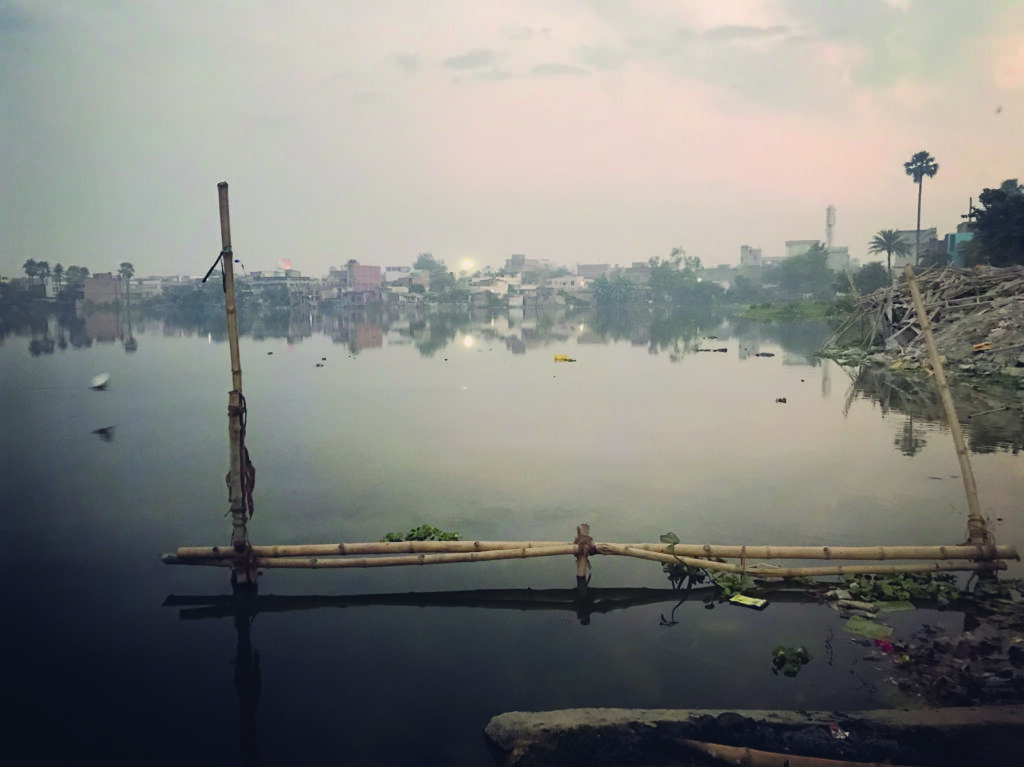Ecological art, a genre fueled in part by environmental disasters, can elicit a reaction that art historians call the “toxic sublime” — an uncomfortable pleasure provoked by looking at gorgeous large-scale landscape photographs of heavily polluted sites. These photographs frequently depict harsh environments as both starkly beautiful and hazardous.
People — particularly those who live near these wastelands — are notably absent from these photographs, says Ila Sheren, associate professor of art history and archaeology. Sheren is writing a book about digital art that flips that template by placing people at the center of depictions of ecological disaster. She examines environmental injustice within this context.
In her art history courses at Washington University, Sheren regularly shows students the 2015 short video Manthan by artist Vibha Galhotra. Her students often express mystification at the video’s emphasis on the ritual pollution of a white sheet, which is dipped in the Yamuna River in India and covered in black sludge by the video’s end. Learn more.
